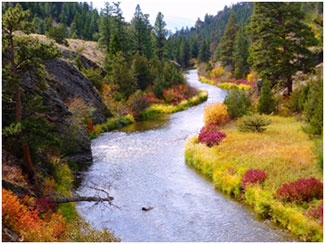
The U.S. Geological Survey, in cooperation with the Montana Department of Transportation, installed cameras and large-scale particle image velocimetry (LSPIV) recording equipment at four sites where the U.S. Geological Survey and Montana Department of Transportation are monitoring bridge scour using other methods. Determination of stream velocities is an important component of hydraulic engineering, river ecology, and fluvial geomorphology. LSPIV is an emerging technique that can be used to estimate stream surface velocities and streamflow using video cameras. Video from the camera is referenced to known locations on streambanks, and postprocessed using computer software that calculates water surface velocity and flow direction between video frames.
The goal of the study was to determine if LSPIV can increase the accuracy of current bridge scour prediction methods using video recordings from 2019 to 2021. Scour around piers is one of the primary failure mechanisms for bridges and poses threats to public safety and interstate commerce. LSPIV installations can capture the flow velocities and directions near bridge piers where other measurement methods might fail or be too dangerous. Additional benefits to the LSPIV technique were continuous data collection throughout the hydrologic cycle and enhanced safety of the methods for estimating velocity magnitude and direction during flood events. Limitations of the LSPIV technique included the angle of the camera to incoming flow; video recordings that were not usable because of ice cover, night, or high winds; and vegetation along the streambank that interfered with water flow analysis. Future applications of the LSPIV technique may continue to improve the processing of the video and reduce limitations for this process.
Final Products
Evaluating the Use of Video Cameras to Estimate Bridge Scour Potential at Four Bridges in Southwestern Montana
